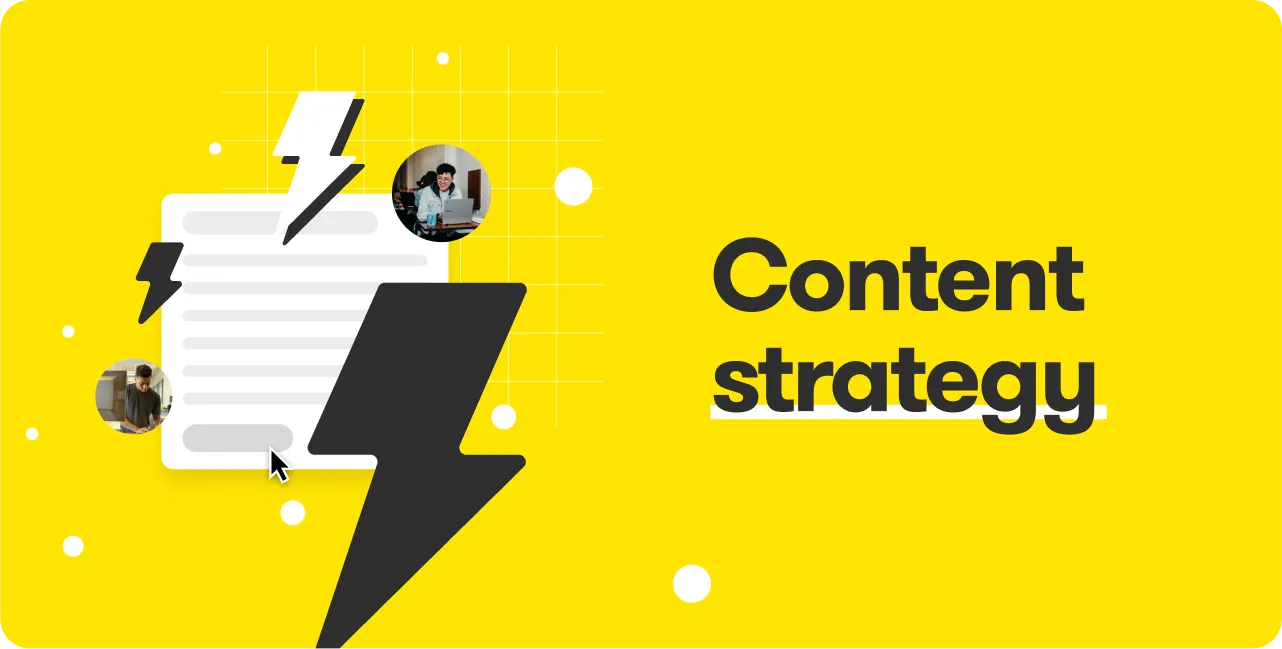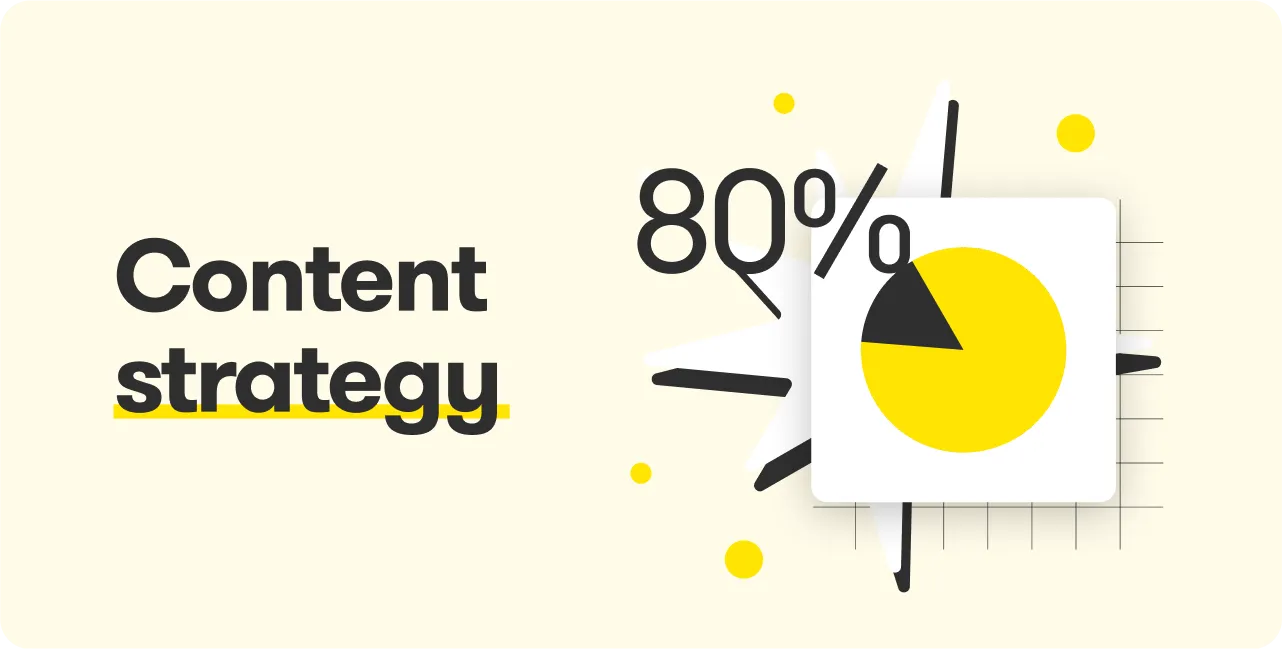Key takeaways
What is a content marketing strategy framework and why do I need one?
What are some popular content marketing frameworks
How can I implement popular frameworks into my content marketing strategy?
- Can multiple content marketing frameworks complement one another?
What is a content marketing strategy framework?
We all know the importance of a solid content marketing strategy. That means knowing your audience, understanding your goals, and selecting content formats and channels that get you where you want to be.
But do you ever find yourself having to continually explain the logic behind your strategy to team members and other stakeholders? Do you feel like your strategy lacks structure or could at least benefit from having a more streamlined workflow? Or are you just interested in having a clearer overview of your content output to help guide your own decision-making?
That’s where a content marketing framework can help. A framework creates an overarching system that ties all elements of your strategy together. It gives you a cohesive structure that keeps you and your team on the same page. And it neatly explains the logic behind each content asset and how it fits into your broader campaign.
The right strategy framework helps you get even more out of your content marketing. Let’s start with a look at some of the best frameworks out there.
Which content marketing framework works are the best?
One of the great things about content marketing frameworks is that you have so many to choose from. Of course, that can also make it a bit tough to figure out which one is best for your team.
Let’s focus on four of the content marketing frameworks that we see delivering the best results
1. HHH/Pow Push Pull
We start with the HHH –also known as the Pow Push Pull – framework, which was brought to our attention by Google alumnus Lazar Dzamic. With this framework, the goal is to create the right balance of content in three categories: Hero, Hub and Help.

‘Help’ content (such as ‘how-to’ content, FAQs, or ‘hygiene’ content) is the foundation of this framework. For a mid-sized organization, it’s recommended to release new content in this category at least once a week. This is also known as ‘Pull’ content, because it’s good at pulling everyone along, no matter which stage of the customer journey they’re in. Just consider this: Research shows that visitors who start on a service page are 50X more likely to become a lead in comparison to visitors who start on a blog page.

‘Hub’ content (such as thought leadership content and landing pages) comes next. Aim to put out content like this about twice a month. It’s also known as ‘Push’ content, because it appeals to potential customers who are already midway through your sales funnel and may need a little ‘push’ to keep them moving.
‘Hero’ content (such as customer cases and creative editorial content) is at the top of the pyramid. This content is designed to ‘wow’ and win over new members to your audience (which is why it’s also called ‘Pow’ content). Aim to put this content out less frequently (about once a month), but make sure its quality is top-notch.
The HHH framework ensures you’re creating content that appeals to your target groups at all layers of your funnel. It also keeps your content flowing at the right pace.
This framework is ideal for: Marketing teams at any stage of the content marketing journey, enabling you to get a clear picture of the purpose each type of content serves within your strategy.
2. The Garyvee Content Marketing Framework
Marketing mastermind Gary Vaynerchuk has developed a framework that helps you get maximum use out of every piece of longer-form content.
Garyvee’s Content Strategy Framework is based on an inverted pyramid:

Under this framework, you base your content output around larger pieces of content (pillar content), which serve as a source for creating smaller pieces of content (micro content). Lastly, you promote everything through social media.
This framework is so powerful because it helps you get maximum exposure for each piece of content you create.
It is similar to the highly effective ‘content cluster’ model, but the clear pyramid structure makes it easier for you and your team to visualise.
This framework is ideal for: Marketing teams with the capacity to create larger volumes of content at regular intervals. It requires adherence to a fairly dense content calendar, and you may need multiple types of content creators who specialise in different content types and channels.
3. The Smart Content Framework (Good Rebels)
This Smart Content Framework from Good Rebels is a 7-step plan that brings focus to your content marketing strategy on every level.
It’s a little more philosophical and high-level than some of the other frameworks, but we believe it’s worth checking out, as it provides a clear overview of what content marketing is all about. It also helps you make sure you’re not forgetting anything important.
Here are the 7 steps (or ‘phases’, according to Good Rebels):
- Phase 1: Define your strategic objectives.
- Phase 2: Identify your audience.
- Phase 3: Define your brand ethos.
- Phase 4: Choose your platforms, messages, and creative content.
- Phase 5: Define your measurement plant (KPIs).
- Phase 6: Develop your media and outreach plan.
- Phase 7: Adapt your existing workflows to this framework.
This framework has been a big help to lots of brands that are early on in their content marketing journeys. We especially like the idea of defining a brand ‘ethos’ – it adds such a realistic, human quality to your brand.
This framework is ideal for: Any marketing team looking for some inspiration and trying to define an overarching ‘why’ behind your content strategy.
4. Orbit Media’s Content Strategy Framework
All of the frameworks mentioned above are suitable for B2B and B2C strategies, but Orbit Media’s Content Strategy Framework was designed specifically with B2B in mind.
This content marketing framework reads like a ‘how to’ guide for creating a really great spread of content. And while it’s not as delightfully simple as a model like HHH, it contains so much wisdom that you’re almost guaranteed to learn something new from it.
One of the main out-of-the-box ideas from the Orbit Media framework is that search – and conversion-optimised sales pages that are gateways to content-marketing success.

Some of the tactics in this plan may be out of reach for smaller organisations, it’s still a great source of inspiration. Even if you don’t think you can follow every step, there’s still plenty of solid advice to learn from here.
This framework is ideal for: Advanced marketing teams working for medium to large organisations. To fully implement this framework, you’ll need the talent and resources to devote to high-impact content types such as influencer marketing.
Combining content marketing strategy frameworks
There’s also nothing keeping you from combining best practices from multiple content marketing frameworks to come up with an original framework that works best for you.
Whichever framework (or combination of frameworks) you choose, be sure to let these three main factors guide your thought process:
- Business goals: What do you want your content to achieve?
- Content: How complex is your message?
- Time: How fast do you need to see results?
Based on these three factors, you can incorporate a content marketing framework like the ones above with other models that you already use to organise your content output.
For example, are you already using the familiar AIDA model to segment your customer journey?
- Attention: Customer becomes aware of your product.
- Interest: Customer becomes interested in your product.
- Desire: Customer wants to own your product.
- Action: Customer buys your product
- (Retention): Rinse and repeat.
Imagine how a model like HHH can align with this customer journey:
- How content, which is the bedrock of your content, appeals to customers at all stages of the AIDA model.
- Hub content targets those in the ‘I’ and ‘D’ stages, who are already moving deeper into the funnel.
- Hero content grabs the Attention of new customers. This is the hardest thing for your content to do, which is also why your Hero content has to be special and meaningful.
Keeping your content marketing in focus
Now that you’ve learned about some of the best content marketing frameworks available, you’re probably full of ideas for how you can start tweaking your own content marketing strategy. These frameworks will immediately help you get a better grip on your content output.
They can also help keep your content on track, even when your market shifts and things become less predictable.
Having a solid framework helps you tie your whole operation together, so you can create high-impact content that helps you reach your goals.
If you liked what you learned about how these frameworks can help you, please feel free to check out the ‘Resources’ section of our website, where you can find many other content marketing-related case studies, blogs, and E-books.




